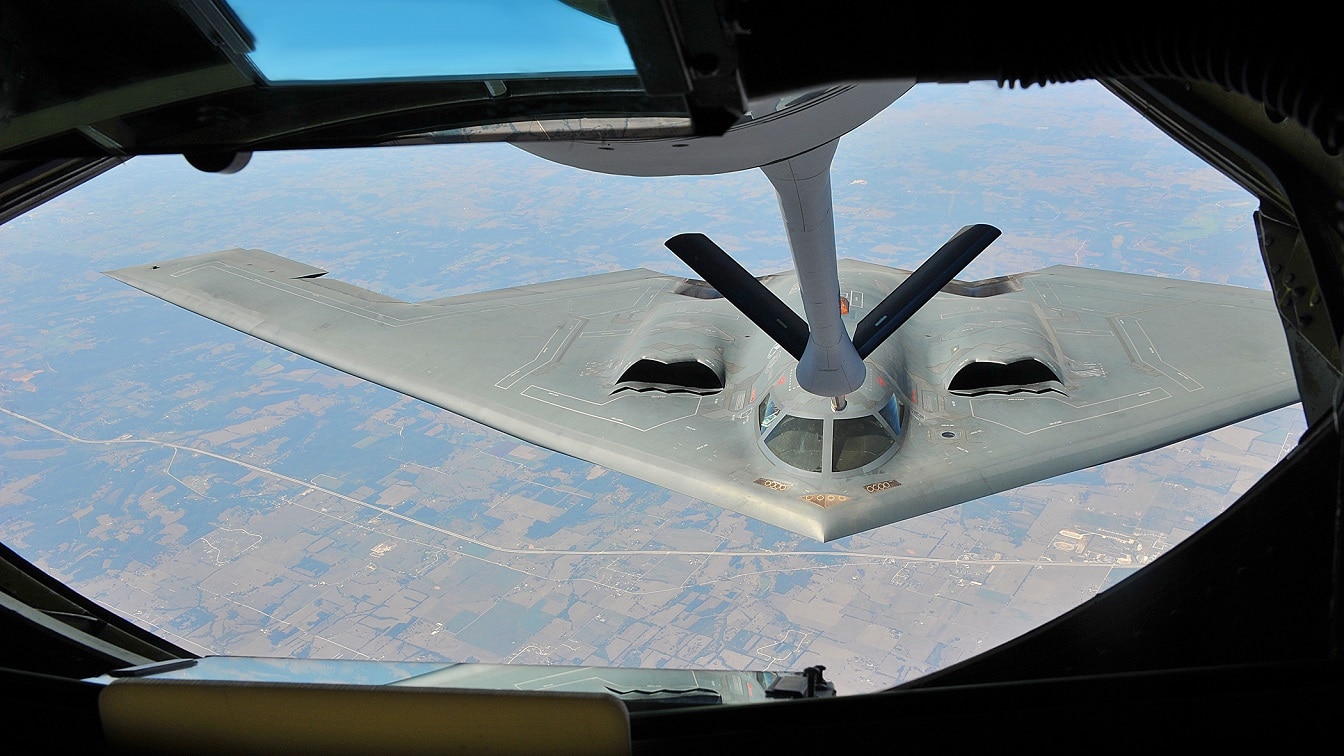There’s nothing routine about B-2 stealth bombers touching down at Diego Garcia. The island—remote, fortified, and just within reach of Iran—is one of the most strategically important patches of concrete on Earth. When the U.S. sends its most advanced long-range bombers there, it’s not for a training run. It’s to make a point. And that point, right now, isn’t only about Iran’s nuclear ambitions—it’s about its proxies, especially the Houthis, attacking both Israel and global commerce in the Red Sea.
This isn’t sabre-rattling for its own sake. It’s a blunt message delivered by military hardware: if diplomacy fails, and if Iran crosses certain lines – whether directly or through its network of armed clients – the United States has both the capability and the will to act. And act quickly.
As someone who has consistently argued for restraint in American foreign policy, I don’t reach this conclusion lightly. But restraint is not pacifism or isolationism. It doesn’t mean pretending threats don’t exist – or that sometimes threats must be met by force. It means using power with discipline – and only when absolutely necessary. And it means recognizing that, sometimes, the use of force, or simply the credible threat of using force, is absolutely necessary.
Yes, Iran’s nuclear program has advanced dangerously in recent years. Tehran is now enriching uranium at levels alarmingly close to weapons-grade, and its breakout time is now measured in days. But that’s not the only threat. Iran’s regional strategy – arming, funding, and directing proxy groups – is already wreaking havoc.
The Houthis, emboldened by Tehran and armed with increasingly sophisticated weapons, are not only firing drones and missiles at Israel – they’re threatening the free flow of international shipping through the Red Sea. Hezbollah is escalating along Israel’s northern frontier. American forces in Iraq and Syria are under near-constant threat from Iranian-backed militias. And all of this unfolds beneath the umbrella of Iran’s growing ballistic missile program.
Against that backdrop, President Trump has drawn a line: come to the table, or face consequences. The B-2s on Diego Garcia are the punctuation at the end of that sentence.
That doesn’t mean war is imminent. And I very much hope and pray that it isn’t. A preventive strike on Iran’s nuclear facilities – or a larger campaign to degrade its proxy network – would be a major undertaking, with real and unpredictable consequences. No serious advocate of restraint wants to see that happen unless absolutely necessary. But there’s a difference between launching a war and doing what’s needed to prevent one. This deployment isn’t about initiating hostilities—it’s about making clear that the United States is not bluffing. It’s about implementing a strategy grounded in the Roman maxim acta non verba – “deeds, not words.”
And this is where restraint and realism converge. At the level of grand strategy, diplomacy cannot succeed without the credible backing of hard power. Absent that pressure, diplomacy becomes performance art. Tehran understands delay tactics. It knows how to divide the West and how to maintain a façade of cooperation while its proxies do the dirty work. A bomber on a runway in Missouri doesn’t keep Tehran up at night. A B-2 parked at Diego Garcia, within reach, does.
The logic of this deployment is clear. It signals that the United States will not tolerate a further escalation – whether nuclear or proxy-driven – without consequence. It matches words with credible force. And it reaffirms the core principle of a restrained but serious foreign policy: speak softly, but carry the big stick – and keep it within reach.
Critics will say this kind of move invites escalation. But the escalation is already here. The Houthis are launching attacks with impunity. Hezbollah is probing Israel’s defenses. Iran’s centrifuges keep spinning. The United States has already responded with targeted strikes and measured warnings. The bombers are not a departure from diplomacy – they are the support structure that gives diplomacy a fighting chance.
This is not a blank check for military action. Restraint demands clarity, legality, and precision. If force becomes necessary, it must be narrowly focused – on a defined objective and with a clean exit. No regime change fantasies. No open-ended deployments. Just the kind of firm, limited, and credible military pressure that makes diplomacy more likely to succeed, not less.
The alternative is worse. A nuclear Iran would transform the region into an even more dangerous powder keg. Israel might act unilaterally. Saudi Arabia would almost certainly seek its own nuclear capability. And American credibility – already frayed after Afghanistan and our wavering posture in Europe – would erode even further.
This is the cost of doing nothing. And it’s why restraint must be distinguished from paralysis. Restraint doesn’t mean standing down. It means standing ready.
The B-2s deployed to Diego Garcia are not there to start a war. They’re there to prevent one. They are a message to Iran: pull back your proxies, halt your provocations, and come to the table. Because if not, what follows won’t be a warning – it’ll be a response.

A KC-135 Stratotanker from the 22nd Air Refueling Wing refuels a B-2 Spirit from the 509th Bomb Wing, Aug. 29, 2012. A B-2 Spirit is designed to be very difficult to detect so it can better engage enemies during war efforts. (U.S. Air Force photo/ Airman 1st Class Maurice A. Hodges)
That’s why those bombers are sitting on that island airstrip. Not to reenact the overreach of 2003, but to remind Tehran that even as America scales back its global footprint and embraces a more focused strategic posture, it still retains the means – and the will – to act when it must.
If this ends the right way, those B-2s will never take off. But if it doesn’t, they’ll be the first to fly. That’s the paradox of real restraint. It isn’t about avoiding confrontation at all costs. It’s about being ready when the cost of inaction becomes too high.
About the Author: Dr. Andrew Latham
Andrew Latham is a non-resident fellow at Defense Priorities and a professor of international relations and political theory at Macalester College in Saint Paul, MN. Andrew is now a Contributing Editor to 19FortyFive, where he writes a daily column. You can follow him on X: @aakatham.

